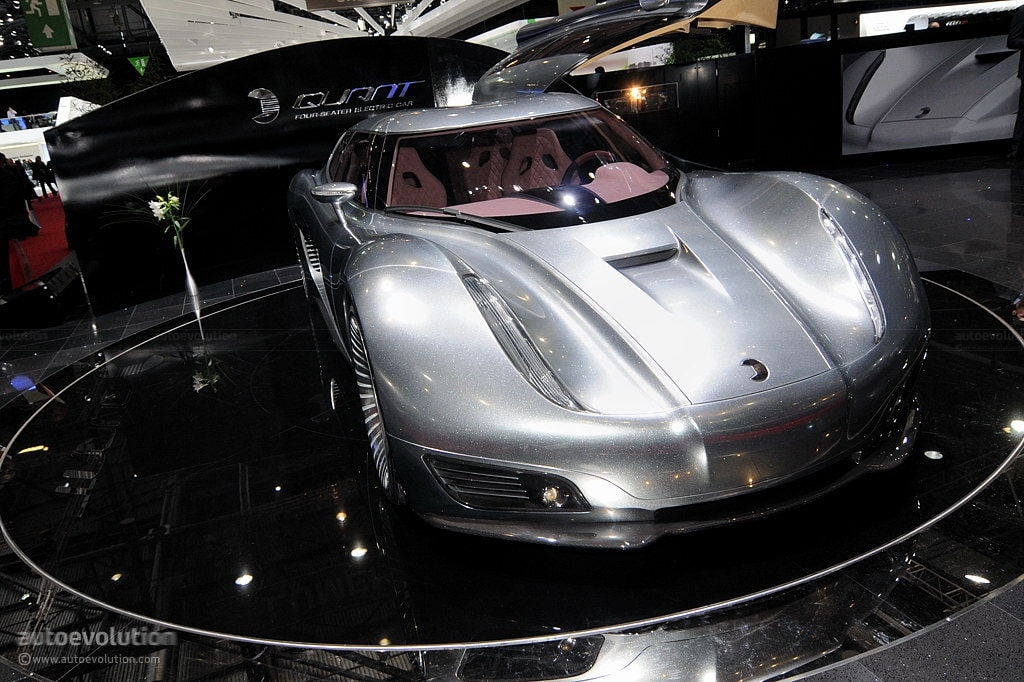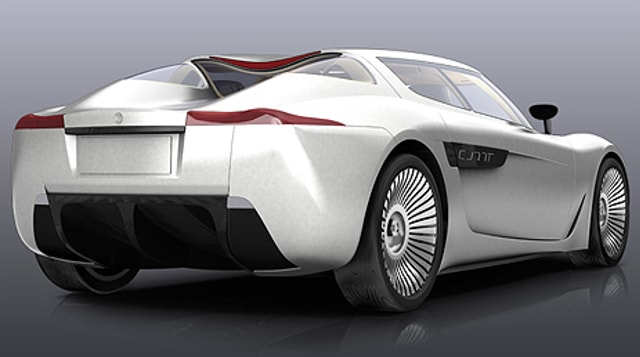The second generation NVL Quant made its public debut in front of media yesterday in Geneva, bringing with it what NVL Solar, its creator, calls "a breakthrough the market eagerly has been anticipating for years." While this last statement is a matter of interpretation, the Quant does bring a range of interesting features. The most exciting thing about it, however, is the promise to turn production version rather sooner than later.
But, until that time is here, let's take a look at what the Quant is all about. The vehicle comes with just about every single advancement made in recent months in terms of electric vehicles, including torque vectoring with 4 electric motors and a full carbon chassis.
What sets it apart from other EVs is the use of two different battery systems, a conventional accumulator technology with a transition metal and air mixture and a redox flow cell. The power is sent to all the four electric motors, independently splitting the 1,500 Nm of torque in between each wheel.
The Quant has some initial performance figures which would give a regular, internal combustion engined supercar, a good run for its money: 2.8 seconds 0-100 km/h acceleration time and a top speed of 377 km/h (234 mph).
The Quant comes with four airbags, ABS and ESP, two infotainment panels for the rear seats, zone Climate Control system, LED front and rear lights and, la piece de resistance, NLV photovoltaic thin film solar coating all over the body of the car.
Access into the car is being made via gullwing doors, to both the front and the rear seats. The split side-lite feature allows either passenger to open and close the front and rear side windows separately, despite the fact that there is only one door per side.
The coating is made of pyrite, which converts light into electricity to supply the operating electronics and also support the battery. According to initial findings, the film has the following advantages.
There's no precise word on when a production version of the Quant will be available, while the price to be asked for it is yet to be decided. Still, we are sure the Quant adventure will not end here and, if and when it comes, it would make for an interesting addition to the automotive world. If it doesn't turn production version, maybe some of the technologies developed for it will find their way into other vehicles.
But, until that time is here, let's take a look at what the Quant is all about. The vehicle comes with just about every single advancement made in recent months in terms of electric vehicles, including torque vectoring with 4 electric motors and a full carbon chassis.
What sets it apart from other EVs is the use of two different battery systems, a conventional accumulator technology with a transition metal and air mixture and a redox flow cell. The power is sent to all the four electric motors, independently splitting the 1,500 Nm of torque in between each wheel.
The Quant has some initial performance figures which would give a regular, internal combustion engined supercar, a good run for its money: 2.8 seconds 0-100 km/h acceleration time and a top speed of 377 km/h (234 mph).
The Quant comes with four airbags, ABS and ESP, two infotainment panels for the rear seats, zone Climate Control system, LED front and rear lights and, la piece de resistance, NLV photovoltaic thin film solar coating all over the body of the car.
Access into the car is being made via gullwing doors, to both the front and the rear seats. The split side-lite feature allows either passenger to open and close the front and rear side windows separately, despite the fact that there is only one door per side.
The coating is made of pyrite, which converts light into electricity to supply the operating electronics and also support the battery. According to initial findings, the film has the following advantages.
- an average photovoltaic conversion efficiency of 38 percent and a peak performance of over 50 percent
- the possibility to tune each layer of the coating to a different target absorption frequency
- degradation coefficient of only 5–6 percent over 20 years
There's no precise word on when a production version of the Quant will be available, while the price to be asked for it is yet to be decided. Still, we are sure the Quant adventure will not end here and, if and when it comes, it would make for an interesting addition to the automotive world. If it doesn't turn production version, maybe some of the technologies developed for it will find their way into other vehicles.










